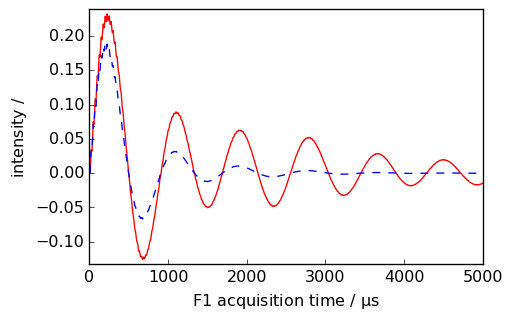
Here we obtained first side-lobe intensities, central peak positions, and FWHM values for various amounts of amplitude and phase apodization. In this paper work, we obtained asymmetric point spread function of one-dimensional asymmetric pupil mask configured analytically in the structure of two periphery fine strips of certain width subjected to phase masking and a central cylindrical region of the aperture is shaded with amplitude mask. The study has a wide range of potential applications such as confocal imaging, medical optics, laser beam profiling, atmospheric science, and design of antenna arrays in communication engineering. In this study we investigated cylindrical optical elements or slit functions with asymmetric apodization employed to redistribute the light energy in the focal plane under geometrical aberration. This technique is effective in improving the axial and lateral resolution. Based on the extensive study made on the system of apodization, we came into conclusion that asymmetric apodization could be the solution for aberrated optical imaging system to achieve the super resolution. This is the origin for the current investigation. It is clear that, through suitable apodization technique in the exit pupil of optical system, the diffractive object may achieve high resolution over a confined region in the image plane of an optical system in the presence of Seidel aberration effect.

There has been a significant number of studies involving diffractive monochromatic aberrations with different aperture systems and techniques. The spherical aberration can also be explained by saying that the deviation of the principal surface from its ideal shape causes the focal length to slightly vary with the radius of zone of the aperture. The third-order Gaussian theory describes that primary monochromatic aberrations like spherical aberrations arise due to geometrical deviations and may also result from the pupil functions. These effects place the limit on the optical system imaging performance. It is well known that diffractive aberrations are caused by deviations from geometrical optics due to the wave nature of light. It is clear that by employing asymmetric apodization we obtained low side-lobes and sharp main peaks on one side of the PSF at the cost of improved side-lobes and wider main peaks on counter side. In these studies the optical system has asymmetrically apodized. There has been a certain number of investigations involving asymmetric apodization for different considerations, that is, improvement of side-lobe suppression, application of asymmetric apodization to linear arrays and circular arrays to improve the axial resolution of the optical system, reduction of Sparrow resolution limit with incoherent illumination to achieve axial and lateral resolution in confocal imaging and to detect the extra solar planets, and improvements of dispersion of chirped fiber gratings. This method can change the performance of an optical imaging system by redistributing the light flux in the image plane.

IntroductionĪsymmetric apodization is the designed modification of the impulse response of an optical system such that simultaneous elimination of secondary maxima and narrowing the central peak in the field of diffraction. The magnitude of this corollary can quantify the super resolution of diffracted structures under spherical aberration.

Additionally, for aberrated asymmetric PSF, FWHM increases and it further decreases with the control parameters of amplitude and phase mask. However, the magnitude of intensity of central peak is originated be to amplified by the highest degree of amplitude and phase masking. On introducing wave aberration effect, there exists dependence of the lateral resolution of central peak of the asymmetric point spread function on the amount of amplitude masking. In the presence of spherical aberration, suppression of optical side-lobes has increased on one side of the point spread function with the width of the periphery strips within the pupil mask. Point spread function underneath spherical wave aberration with antiphase apodization has been obtained by one-dimensional pupil mask functions.


 0 kommentar(er)
0 kommentar(er)
